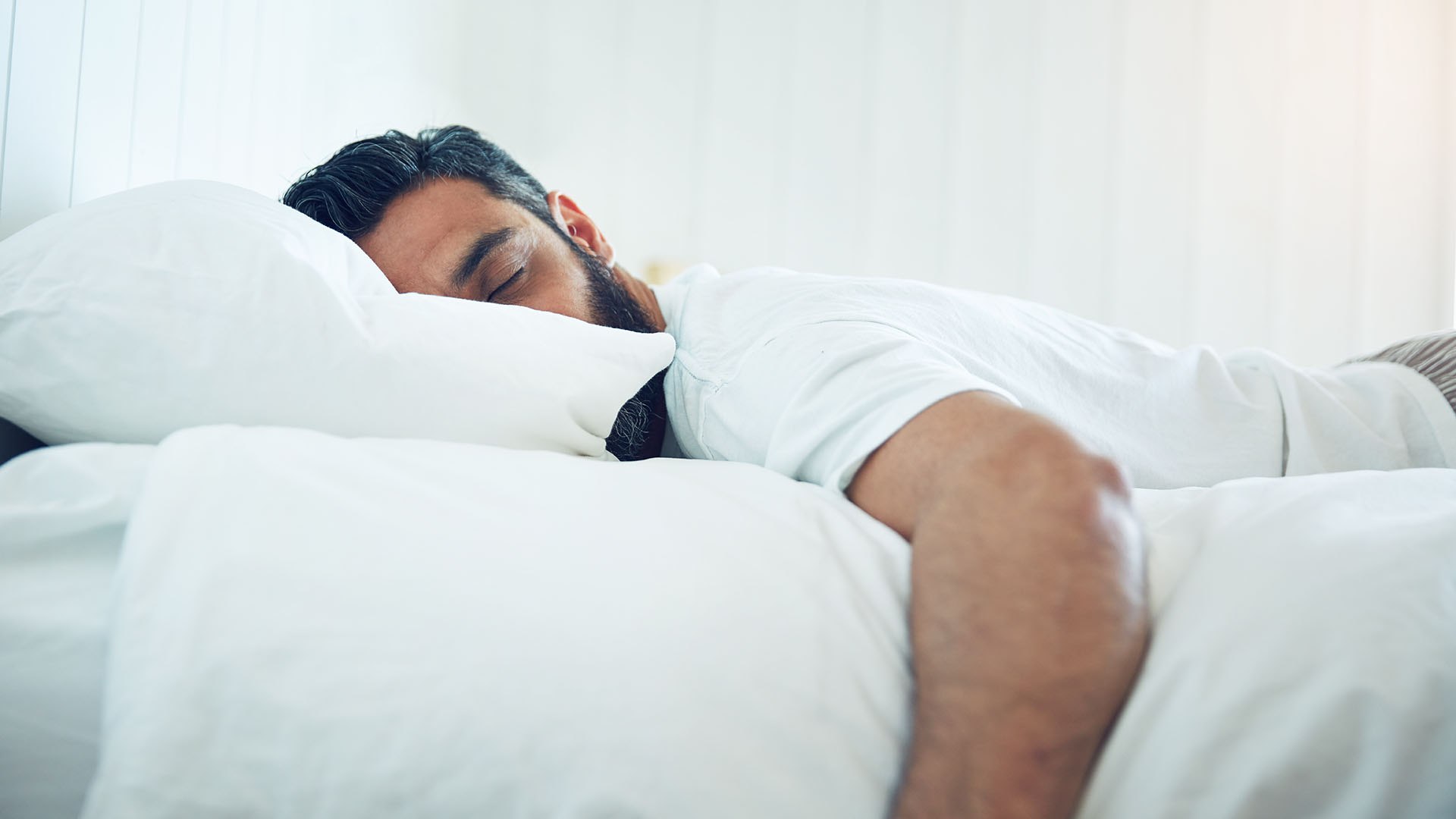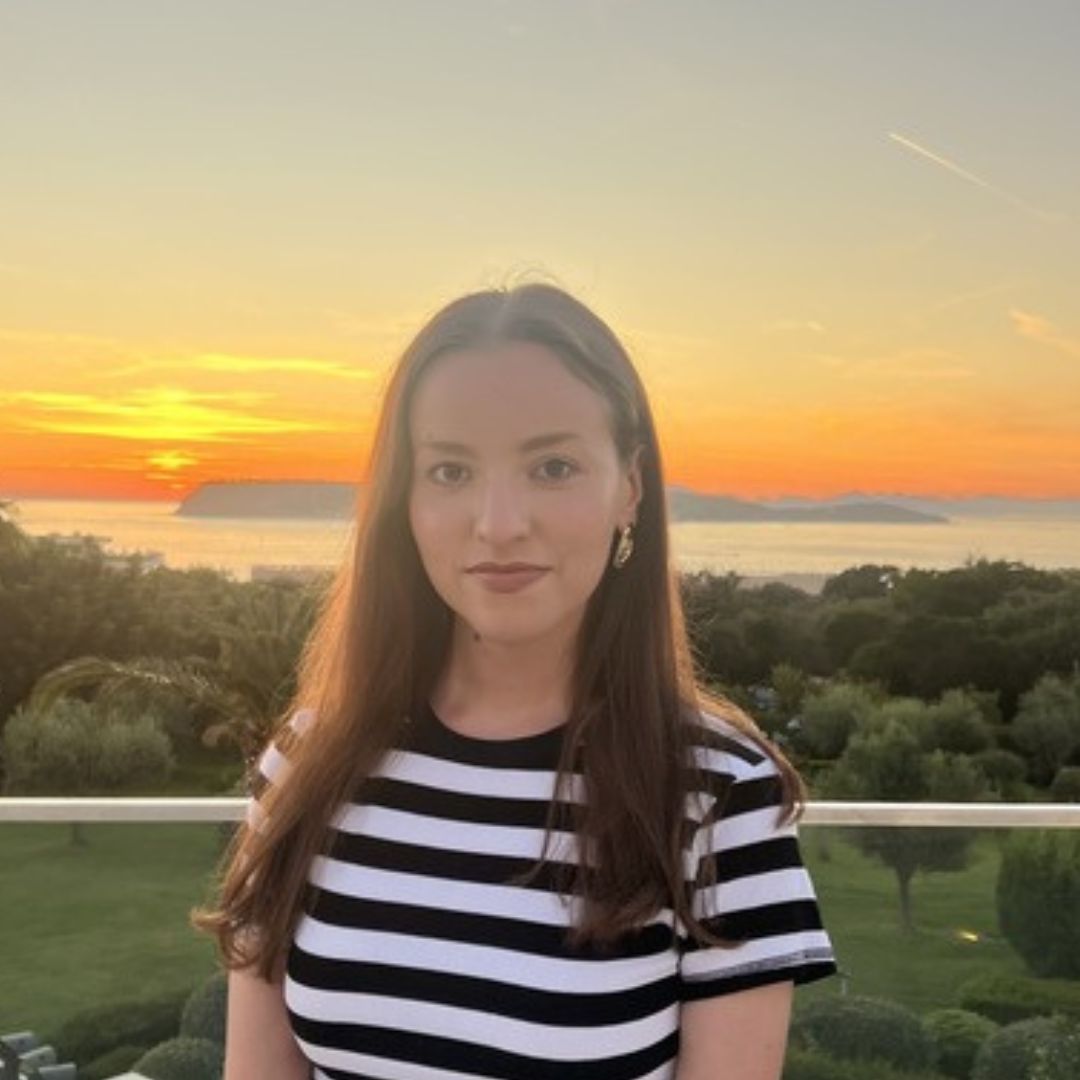3 reasons why stomach sleeping is bad for you — and how to switch positions
Experts explain why sleeping on your stomach isn't just bad news for your spine

Sleeping on your stomach might be the only way you can fall asleep, but it isn't a recommended sleep position. In fact, many experts advise against sleeping in the prone position due to its major drawbacks. But why is stomach sleeping so bad and is there any way you can fix this?
While choosing the best mattress for your sleeping position can make a huge difference to your sleep posture is, there are other ways you can curb the negative effects of sleeping on your stomach.
To help, we spoke to James Leinhardt, a sleep posture expert at Levitex, and Theresa Schnorbach, psychologist and sleep expert at Emma Sleep, about the effects of sleeping on your stomach and how to stop. Plus, the pair also share tips on how to sleep safely on your stomach until you're ready to make the transition.
3 reasons why stomach sleeping is bad for you
Stomach sleeping is relatively rare – research shows that roughly only 16% of adults sleep on their front. However, if you are in the front-sleeping minority, you're likely to experience some negative side effects of your preferred sleep style. There are three major drawbacks to sleeping on your stomach:
- 1. It fights the natural curve of your spine, causing pain
- 2. You'll overextend your neck during sleep
- 3. Stomach sleeping hinders bloodflow, causing fatigue
Both Schnorbach and Leinhardt agree that the biggest drawback of stomach sleeping is poor neck and spine alignment, which can lead to aches and pains. "When you're lying on your stomach, there is a distance between your spine and the mattress, which means gravity will be able pull down and fight the natural curves of your spine, leading to lower knee, hip and lower back pain," explains Leinhardt.

"You also have to turn and twist your head. You generally have a preference, which means you're turning your head all the way right or all the way left." Continues Leinhardt. "You're always stretching the left side of your neck and shortening on the right side, or vice versa."
[stomach sleeping] hinders blood flow which can affect quality of sleep, leaving you more fatigued
Theresa Snorbach, Sleep Expert
Schnorbach says that the angle your neck is forced into when stomach sleeping can cause pressure on the spine, which in turn causes issues for the rest of your body. "Spinal compression as a result of the angle your neck is forced into when stomach sleeping can cause musculoskeletal strain to other muscles and joints all around the body."
Get instant access to breaking news, the hottest reviews, great deals and helpful tips.
The second side effect of sleeping on your stomach? Hindered blood flow. "Sleeping on your stomach will restrict the blood flow through your body, so you'll wake up with pins and needles, a dead arm, or tingly fingers," warns Leinhardt.
Schnorbach adds that stomach sleeping "hinders blood flow which can affect quality of sleep, leaving you more fatigued."
How to switch from stomach to back or side sleeping
Both Snorbach and Leinhardt advise stomach sleepers to try sleeping in one of two positions instead: back or stomach. While Schnorbach recommends back sleeping as it's regarded as the healthiest position, Leinhardt recommends transitioning to your side: "When you're lying on your side, it's an easier transition from lying on your stomach as it's a 90 degree change rather than a 180."
Whichever position you choose, Schnorbach and Leinhardt say the important thing to remember is that switching sleep styles is entirely possible. Here are some ways to train yourself to stop sleeping on your stomach.
1. Transition slowly
If you've always found it easier to sleep on your front, you won't magically become a back or side sleeper after just one night. So don't become frustrated if you can't spend the entire night sleeping on your side. In fact, Leinhardt says it could take a week or two to fully switch.
"The way to do it is to try 30 minutes a night transitioning," he suggests, "and if you don't get success, then you go back to your old ways until you reach the point where it [the new position] just becomes normal. "
2. Use props to help you switch sleep position
If you're struggling to stay in a certain sleeping position, both Leinhardt and Schnorbach promote the use of spare pillows to help you maintain the right posture when adapting to a new sleep style. A body pillow can help stomach sleepers switch to side sleeping.
"You can arrange some large pillows behind your back whilst you're on your side so that they keep you from rolling over," says Schnorbach. "After a few weeks of this, sleeping on your side will become a habit. When on your back, putting a pillow underneath your knees will support your spine and the natural curve in your back."
Leinhardt also recommends placing a pillow between your knees and ankles when side sleeping to keep your body naturally aligned. A pillow under your lower back can also help you learn how to sleep on your back.

3. Pick the right mattress and pillow
If you're sleeping in a new position, you'll need the right setup for that sleep style. There are plenty of mattresses and pillows out there that suit certain types of sleepers, while the best mattress toppers can provide a comfier or more supportive sleep surface without you having to spend money a brand new mattress. With your new supportive set-up, you might find yourself able to sleep for longer.
"For example, if you're lying on your back, you have to have a thin pillow to support the head, but not too thin that your head drops back," explains Leinhardt. "You have to have a medium-firm mattress as it's pressure-relieving and comfortable enough to lie there for a long time, but firm enough that you don't sink."
3 expert tips for sleeping safely on your stomach
We know that sleeping in a position you're not comfortable with can be a huge challenge and can lead to more than a few sleepless nights. If you've tried to switch from stomach sleeping to your back or side but just find it too uncomfortable, follow these tips to help limit the side effects of sleeping on your stomach:
1. Get a low pillow or ditch it all together
If you're sleeping on your stomach, it's best to use a pillow with a low loft. According to Leinhardt, stomach sleepers, with the exception of people with certain health conditions, can ditch the pillow altogether.
"If you're lying on a pillow, [the neck's alignment] is even worse because then you're hyper extending the neck and pushing it up. So if you are going to insist on sleeping in this position, the very first thing is to never lie on a pillow. "

2. Support your spine with a firmer mattress
This year's best mattresses for stomach sleepers are designed to keep your spine and neck aligned when lying on your front. Schnorbach recommends a supportive mattress that prevents the hip region from sinking into the bed. "Opt for a firm mattress that lifts the hips in line with the shoulders," she says.
3. Stretch out your spine
As we already know, sleeping on your stomach isn't great for your neck and spine alignment, and it can lead to aches and pains in the hips, knees and lower back. The good news, however, is that you can prevent these aches with gentle exercise.
"If you must sleep on your front, I would recommend stretching to avoid joint pain, strain and muscle damage," says Schnorbach.
Our top 3 mattresses for stomach sleepers
1. Awara Natural Hybrid mattress: from $1,299 $649 at Awara Sleep
Our Awara Natural Hybrid mattress review says that this bed suits all sleep styles thanks to its build quality and firm support. Currently, you can save up to $765 on their king and queen sizes, with a queen now being sold for $949 (was $1,699). Extras include a generous 365-night sleep trial, free shipping and returns, and a lifetime warranty.
2. Siena Memory Foam Mattress: from $499 $199 at Siena Sleep
Our Siena Memory Foam mattress praises this all-foam bed (which is one of our top picks for best cheap mattress) for its firm feel, good support, and great temperature regulation. Plus, there's a permanent Siena mattress deal that has knocked up to 60% off this memory foam mattress.
3. Cocoon by Sealy Chill Mattress: from $619 $399 at Cocoon by Sealy
Our Cocoon Chill mattress review recommends this all-foam bed to any stomach sleepers who also sleep hot thanks to its cooling properties and medium-firm support. Plus, there's an evergreen Cocoon by Sealy mattress sale cuts 35% off the MSRP.

Frances Daniels is a PPA-accredited journalist and Sleep Staff Writer at Tom's Guide with an MA in Magazine Journalism from Cardiff University. Her role includes covering mattress and sleep news and writing sleep product reviews and buyer's guides, including our Best Hybrid Mattress 2025 guide. She is interested in the relationship between sleep and health, interviewing an array of experts to create in-depth articles about topics such as nutrition, sleep disorders, sleep hygiene, and mattress care. She is also our specialist on mattress toppers — producing bed topper reviews and taking care of our Best Mattress Toppers 2025 guide — and leads content relating to fiberglass-free beds for a non-toxic sleep. Outside of Tom's Guide, she has written for Ideal Home and Marie Claire.



